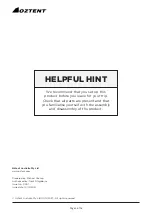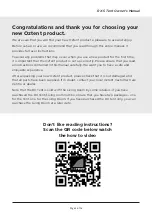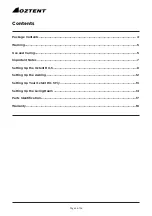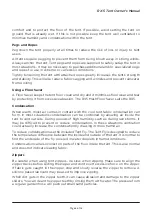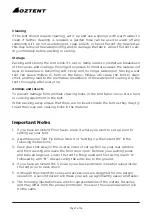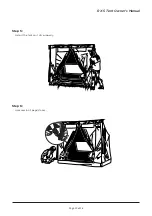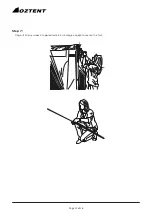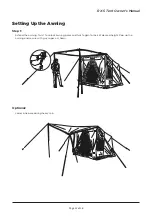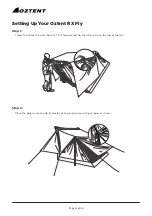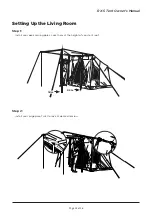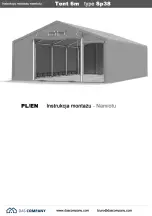
Page 5 of 18
Use and Caring
Conditioning Canvas
It is important that you season your canvas when it’s new and also after long periods
of storage so it gives its best performance. Simply pitch your tent and wet it down
with a garden hose. This enables the stitching holes to shrink around the thread in
the stitch lines and the cotton in the canvas to swell. Let the canvas dry completely
before repeating this process another two times.
Due to the nature of canvas, any seam even after seasoning can still cause a drip. If
you do notice a seam has not been seasoned properly, simply rub a wax candle on
the exterior of the stitch line. This will create a waterproof barrier quickly and easily.
If cared for correctly, your tent will still be around for the next generation of campers
to enjoy.
Ventilation
Maintain adequate ventilation inside the tent at all times.
Campsite Choice
When choosing a campsite, carefully consider the possibility of falling rocks or tree
limbs, lightning, flash floods, avalanches, strong winds, and other potential hazards,
to reduce the risk of loss or injury.
Select a site that’s level, well drained, and is protected from the wind and other
elements. Clear the campsite of sharp stones, sticks, and other debris, both for
Warning
Never use any fuel-burning products (stoves, lanterns, heaters, etc.) inside
or within proximity of this tent.
Use of fuel-burning products inside or within
proximity of the tent can result in the accumulation of dangerous concentrations of
carbon monoxide – a colourless, odourless and tasteless gas that is slightly denser
than air. Breathing carbon monoxide could cause serious injury or death.
Keep all flame and heat sources away from this tent.
This tent is made with flame
resistant fabric but it is not fireproof. The tent fabric will burn if left in continuous
contact with an open flame or other heat source. Failure to keep all flame and heat
sources away from this tent may result in a fire that could cause serious injury or
death.
Before using this product, read and fully understand: 1) attached warnings; 2) the
instruction manual and all accompanying documentation. Failure to follow these
directions can cause an unsafe situation leading to injury.


